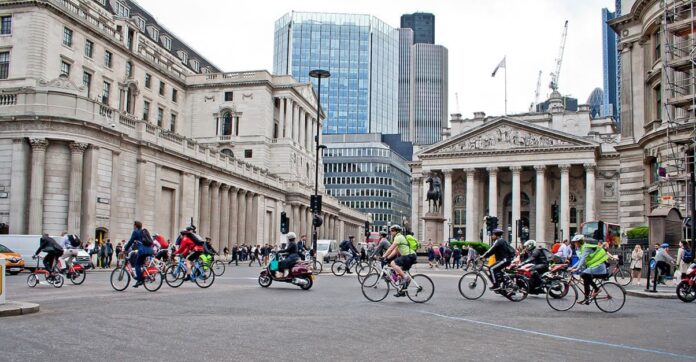THE cycling revolution is officially taking control, with new research confirming that bikes are the method of choice for the City’s rush hour commuters.
There are now more cycles on the streets of the Square Mile at peak times in the morning than there are private cars, taxis, motorbikes, light and heavy goods vehicles and public service vehicles, according to a report from the local authority.
But future growth could be in jeopardy if current trends are anything to go by. Traffic in the City 2018, which includes Santander Cycles and similar dockless hire bikes in the tally of bikes on the City’s roads, is the latest in a series of bi-annual surveys that dates back to the 1990s, and is based on data gathered from 15 sites.
It states that traffic composition has changed significantly over the past 20 years, both in terms of volume and proportions of different vehicle types that make up the local road scene, with a combination of factors, planned and unplanned, noted as having an influence on figures.
“The total number of vehicles counted on the City’s streets has declined overall since counting began in 199 from a high of over 200,000 vehicles to just under 124,000 in 2017. This represents a 40% decrease… or approximately -2% per year.
“However, this decrease has occurred in bursts rather than gradually with greater drops in 2004, 2010 and 2016. These count years correspond with the introduction of the congestion charge zone (2003), the global recession (2008), and the introduction of cycle superhighways (2016), alongside other ongoing factors such as national increases in rail travel and traffic space reallocations on City streets.”
But while all other modes of transport have reduced to contribute to the declining number of vehicles in the Square Mile, cycling is very much on the up, with 292% more bikes on the road than when the first report was published by the Corporation’s department of the built environment in 1999.
In contract there are 59% less cars and taxis, 49% fewer motorcycles, and half the number (49%) of heavy goods vehicles rumbling about town.
However, growth hit the brakes in 2012, and researchers warned that the cycling revolution is in danger of hitting a plateau if added provisions are not made to encourage even more people to get in the saddle.
“The rate of growth in cycling across the City between 1999 and 2012 was on average over 20% per year, with some years reaching over 50% year-on-year growth.
“However, growth in cycling began to slow in 2012. While this is not an exploratory exercise, it does appear that the City counts have reached ‘peak cycle’ over the last five years, suggesting that significant changes on cycling infrastructure provision and/or travel behaviour may be needed to spur further growth in cycling on City streets.”







